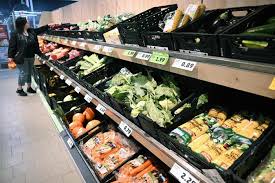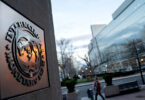LAHORE/ABUJA/NEW DELHI (Web Desk/Reuters): Inflation has been affecting the overwhelming majority of people around the globe, including Pakistan, but it is the higher food prices – besides the increased power and gas tariffs as well as fuel prices – which are proving to be most disturbing aspect for them.
At the same time, increase in food prices are sustaining and fuelling the overall inflation which in turn mean there won’t be any rate cuts soon – a continuation of the monetary tightening as advocated by top financial institutions and central banks.
Hence, interest rates will stay at the record high levels in Pakistan and other developing nations as well as poorest countries which are worst affected by this trend amid currency devaluation and higher import costs due to the increase in commodity prices in global markets.
Therefore, they will remain stuck in the vicious circle of higher inflation and interest rates with no hope for revitalising their economies.
One must remember that the low-income groups form the largest share of population in developing and poor nations. With the living standards and nutrition intake levels already low or very low, the shrinking purchasing power is depriving them of their very basic rights – food.
HIGHEST IN 18 YEARS FOR NIGERIA
Nigeria’s annual inflation rose in November for the 11th straight month to the highest level in 18 years, adding pressure on the central bank to tackle the rise amid a worsening cost-of-living crisis in Africa’s largest economy.
Consumer inflation rose to 28.20 per cent in November from 27.33pc in October, data from the National Bureau of Statistics showed on Friday.
The last time Nigerians experienced this level of inflation was in August 2005, official data shows.
On Dec 13, the World Bank warned Nigeria to control inflation, and tasked the central bank to tighten monetary policy, build market confidence around free foreign exchange pricing and phase out so-called “ways and means” advances to the government.
Price rises for food and non-alcoholic beverages were the biggest driver of annual inflation in November, the statistics bureau said.
Food inflation, which accounts for the bulk of Nigeria’s inflation basket, rose to 32.84pc in November from 31.52pc a month earlier.
Analysts said naira depreciation, higher fuel and food prices, logistics costs and money supply growth, were some of the major drivers of Nigeria’s inflation.
Inflation in Nigeria, Africa’s most populous nation, has risen to double-digits since 2016, eroding incomes and savings, despite the central bank hiking interest rates to their highest level in nearly two decades at its last meeting.
The central bank, at its last monetary policy meeting in July, opted for a smaller-than-expected 25 basis point hike, saying it preferred a moderate increase to anchor inflation expectations while continuing to support investment.
INDIA GRAPPLES
It was reported earlier that India’s retail inflation in November rose at its fastest pace in three months due to higher food prices, strengthening expectations that the central bank will not ease interest rates anytime soon.
Annual retail inflation rose to 5.55pc in November from 4.87pc the previous month. However, this was below that rate of 5.70pc forecast by a Reuters poll of economists.
Food inflation, which accounts for nearly half of the overall consumer price basket, was 8.70pc in November, up from 6.61pc in October.
Core inflation, which strips out volatile food and energy prices, was estimated to be 4.05pc-4.2pc in November, compared with 4.20pc-4.28pc in October, according to four economists. The Indian government does not release core inflation figures.
“The uptick was entirely driven by the food and beverages segment, with all other groups either reporting a lower or an unchanged inflation print in November relative to October,” said Aditi Nayar of ICRA.
The latest print confirms the Reserve Bank of India’s (RBI) fears about volatile food prices pushing retail inflation higher. Last week, the bank, for the fifth consecutive meeting, kept the policy rates on hold as inflation remains above target and growth remains strong.
Prices of cereals rose by 10.27pc and vegetables by 17.7pc in November over same month last year, while pulses were up by 20.23pc, spices by 21.55pc and fruit prices were up 10.95pc in November over the same period last year.
In October, cereals rose 10.65pc, vegetables prices rose 2.7pc, pulses by 18.79pc, spices by 22.76pc and fruits by 9.34pc.
November’s inflation rate was within the RBI’s upper tolerance band of 2-6pc for a third consecutive month but remained firmly above the 4pc target.
Recently, RBI Governor Shaktikanta Das said the near-term outlook is “masked by risks to food inflation,” which might lead to an uptick in November and December even though core inflation, which excludes volatile food and fuel prices, has broadly moderated.
India has taken a number of steps to cool price rises since July when inflation spiked over 7pc. It has banned some exports of rice, wheat, sugar and onions. The government has said it will take more measures to contain food inflation.
India’s economic growth in the first half was an impressive 7.7pc.
“Elevated food prices and solid economic growth suggest to us that the RBI will only start easing policy in the second half of 2024,” said Thamashi De Silva of Capital Economics.







